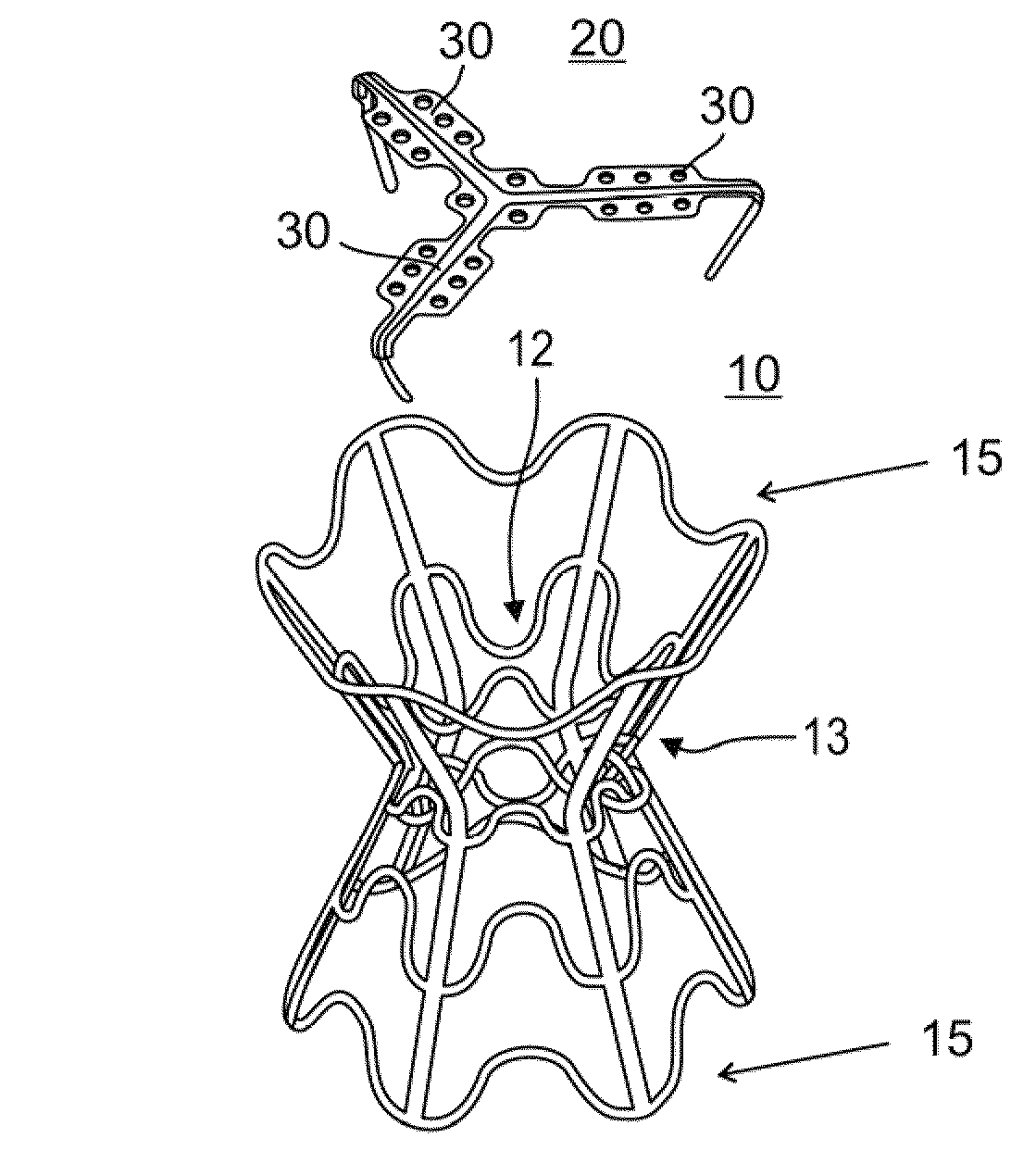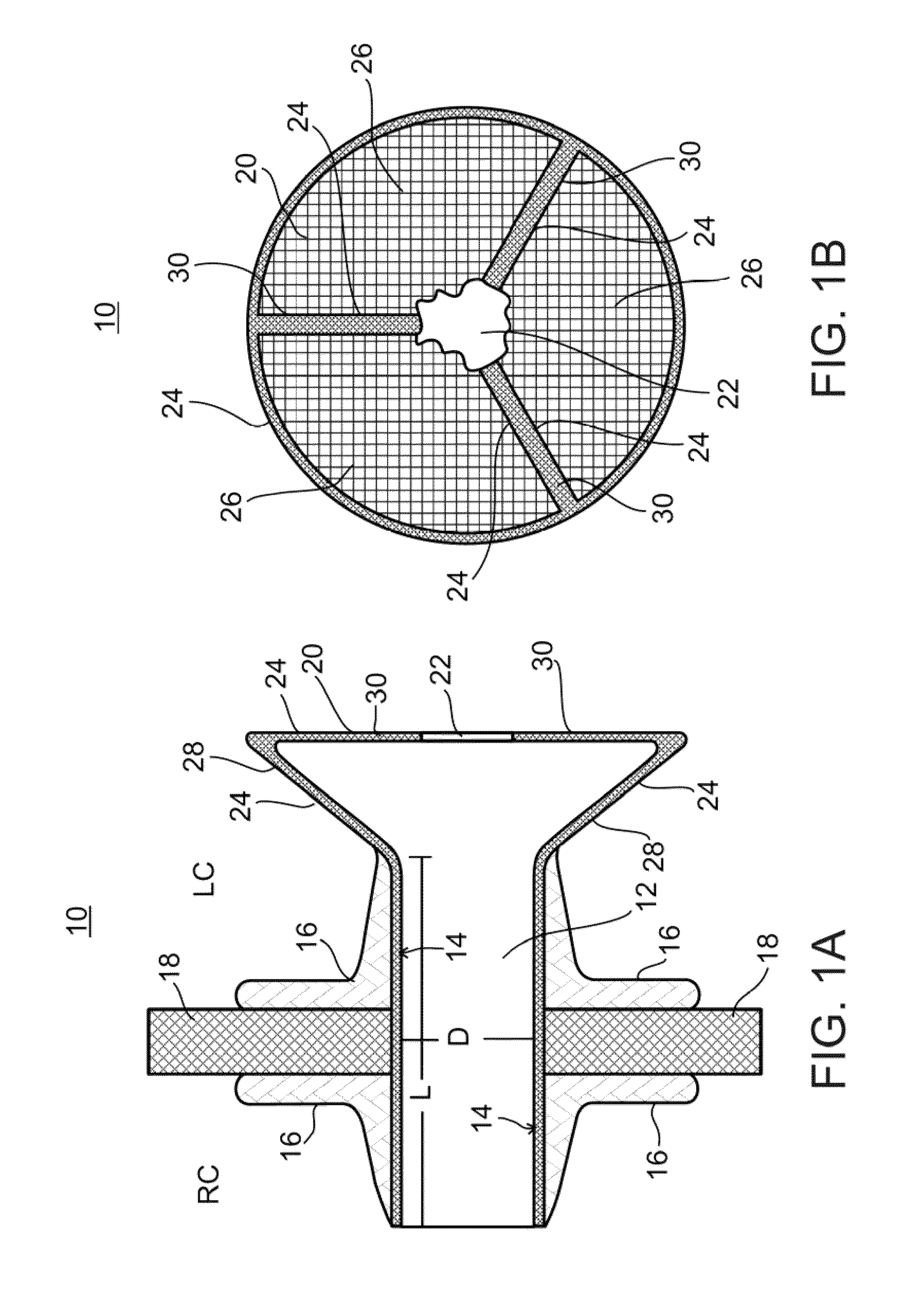Device and method for regulating pressure in a heart chamber
a technology of a heart chamber and a device, applied in the field of devices and methods for regulating pressure in the heart chamber, can solve the problems of reduced cardiac output, increased cardiac filling pressure, fluid accumulation, etc., and achieve the effect of accurate compensation
- Summary
- Abstract
- Description
- Claims
- Application Information
AI Technical Summary
Benefits of technology
Problems solved by technology
Method used
Image
Examples
example 1
Flow Calculations
[0110]The present inventors have calculated the flow needed to reduce left atrial pressure (LAP) to below 25 mmHg. For the purpose of calculations it was assumed that under SHF and DHF, the LAP minimum and maximum pressures are the same (12 mmHg & 28 mmHg respectively). In order to treat these conditions, LAP must be reduced by 3-5 mmHg.
[0111]The following parameters were taken into consideration:
[0112](i) SHF cardiac output (CO)=2.5-4 l / min heart rate (HR)=75 (ii) DHF CO=3-5.5 l / min HR=70. In SHF one can assume a linear correlation between LA pressure and volume (Pstatic fluid=ρgh), and thus one can calculate the following:
[0113]In SHF: LAP-16 mmHg, Filling volume-50 cc each cycle. Reducing LAP by 3-5 mmHg i.e. 3-5 / 16=20%-30% requires 20%-30% less blood i.e. 10 cc-16 cc of blood each heart beat which translates to ˜0.75 l / min to 1.2 l / min LA-RA flow in SHF [10 cc & 16 cc×75 (HR)]
[0114]To find an optimal shunt diameter, one can use Bernouli's equation and assume no ...
example 2
Construction and Deployment of One Embodiment of the Present Device
[0122]A device similar to the one illustrated in FIGS. 1A-2B is manufactured as follows. A NITINOL tube having a diameter of 5 mm, a length of 18 mm and a wall thickness of 0.25 mm is laser cut to create a tubular wire frame. The tubular frame is electro-polished and cleaned and then heat treated to set its final shape on a mandrel. The internal and external surfaces of the frame are wrapped with ePTFE. Valve leaflets are die cut from 0.25 mm thick bovine pericardium tissue and sutured to form a partially open leaflet valve which is then sutured onto the tubular frame over the fabric at the funnel opening. The resultant device is packed until use under sterile conditions. Prior to transplantation, the device is unpacked and collapsed by hand or by a crimping tool to a final diameter of less than 13 F. the collapsed device is loaded into a catheter and placed in front of a pusher rod fitted into the catheter. The devi...
example 3
Construction and Testing of a Diabolo-Shaped Device
[0123]A diabolo-shaped configuration of the present device was constructed by laser cutting a stent from Nitinol tubing and shaping the cut stent into a Diabolo by using a mandrel and applying 530° C. for 12 minutes. Bars for forming the valve arms were laser cut from a 0.0.09 mm thick Nitinol sheet and the bars were shaped using a mandrel. The shaped bars were then welded to the diabolo-shaped stent at three points encircling an opening of the stent. The bare wire frame form of the device is shown in FIG. 6A.
[0124]The stent was then covered with ePTFE impregnated with carbon and Pericard leaflets were sutured to the three bars and the circumference of the stent around the three bars (FIG. 6B). The finished device was then sterilized and collapsed for loading into a sheath.
[0125]The device shown in FIG. 6B was tested using the flow chamber described below to simulate the fluid pressures present in heart chambers. The device performe...
PUM
 Login to View More
Login to View More Abstract
Description
Claims
Application Information
 Login to View More
Login to View More - R&D
- Intellectual Property
- Life Sciences
- Materials
- Tech Scout
- Unparalleled Data Quality
- Higher Quality Content
- 60% Fewer Hallucinations
Browse by: Latest US Patents, China's latest patents, Technical Efficacy Thesaurus, Application Domain, Technology Topic, Popular Technical Reports.
© 2025 PatSnap. All rights reserved.Legal|Privacy policy|Modern Slavery Act Transparency Statement|Sitemap|About US| Contact US: help@patsnap.com



